The ultimate guide to SharePoint, OneDrive, and Teams external sharing

Table of contents
What are the recommendations for Microsoft 365 file sharing? We break down SharePoint external sharing, OneDrive file sharing, Microsoft Teams guest access, and how to share a SharePoint site—so you can collaborate with colleagues and external users securely.
SharePoint deep dive: Benefits to creating a flat site structure in SharePoint Online
Sharing content externally is easier than ever thanks to the cloud. And the shift from a technology- to intent-driven approach in Microsoft’s modern workplace means users can collaborate with the right people, regardless of location.
Even still, external sharing remains a business risk. So, how can you allow your users the freedom to share and be sure sensitive information is kept secure?
To answer that question, we wrote this complete and definitive guide—so you can stay in control of the who, what, where, and when of external sharing.
What is external sharing?
External sharing in SharePoint is the act of making content available to someone outside of your organization. This is someone without a Microsoft 365 account from your organization.
Within the family of services provided in Microsoft 365, SharePoint is the tool for document management. And that probably won’t change anytime soon.
“I think the future of SharePoint is doing the things it does really well as part of the family of applications that, together, deliver the modern workplace to organizations.” —Susan Hanley, Microsoft MVP, told ShareGate
So it should come as no surprise that many of the configurations and permissions for external sharing happen through the SharePoint admin center. But Microsoft’s move towards cross-product collaboration in Microsoft 365 means there’s more than one way to work with outside collaborators.
External sharing and access can be enabled in:
- SharePoint Online
- OneDrive for Business
- Microsoft Teams
- Microsoft 365 Groups
Our State of Microsoft 365 report digs into how IT pros are handling permissions and external access across SharePoint, OneDrive, and Teams—and what governance challenges come next.
Sharing vs. access
There are a few different ways to grant outside guests access to resources within your organization.
External sharing allows you to share documents, files, folders, lists, libraries, and complete sites in your SharePoint Online. You can also externally share photos, Microsoft Office documents, files, and entire folders from your OneDrive.
But what happens if you want to collaborate with people outside your organization across multiple products—communicating through chat or coordinating meetings with a shared calendar?
If that’s the case, you can grant access to some content by adding people to a Microsoft 365 group or team.
External access vs. guest access in Microsoft Teams
It’s worth pointing out that external access and guest access mean two very different things in Teams.
Read how to authorize guest access in Microsoft Teams in the official Microsoft documentation.
External access gives access to an entire domain—allowing Teams users from other domains to find, contact, and set up meetings with you. External users can call you through Teams and send instant messages. But if you want them to be able to access teams and channels, guest access might be the better option.
Guest access gives access permission to an individual. Once a team owner has granted someone guest access, they can access that team’s resources, share files, and join a group chat with other team members.
Guest access in Microsoft 365 Groups
A more traditional way to collaborate and share with external users is to add them as guest users to a Microsoft 365 group.
Any group owner of a Microsoft 365 group can grant access to their group’s conversations, files, calendar invitations, and the group notebook—although as an admin, you can also control that setting.
All of a guest’s interactions with the rest of the group take place through their email, since guests don’t have access to the group site. But they can still receive calendar invitations to their inbox, and—if the admin has turned on the setting—links to shared files and attachments.
Read step-by-step directions for how to add guests in the official Microsoft support documentation.
Guest users can also access a Microsoft 365 group’s team site in SharePoint.
SharePoint Online external sharing
When it comes to external sharing, SharePoint Online lets you control settings at the:
- Organization level: For any external sharing to be allowed, it has to be enabled at the organizational level. You can change the organization-level external sharing setting from the SharePoint admin center.
- Site level: Once enabled across the organization, external sharing can be restricted on a site-by-site basis. Global or SharePoint admins in Microsoft 365 can change the external sharing setting for a site—but site owners can’t.
If a site’s external sharing option and the organization-level sharing option don’t match, the most restrictive value will always be applied.
At the site level, you have four basic options when it comes to external sharing:
No external sharing
Choose this option to prevent all site users from sharing any site content externally.
Go to your SharePoint admin center, and in the left pane under Sites, select Active sites. Select the proper site, and then click Sharing. Select the Only people in your organization option, and select Save.
This is the default setting for communication sites and classic sites, but otherwise external sharing is turned on by default for your entire SharePoint Online environment if it’s been enabled at the organization-level.
Authenticated: existing guests
This option only allows external sharing with people already in your Azure Active Directory.
Go to your SharePoint admin center, and in the left pane under Sites select Active sites. Select the proper site, and then click Sharing. Select the Existing guests option, and select Save.
Users might already exist in your directory from previously accepting sharing invitations, or because they were manually added as guest users in the Azure portal.
Authenticated: new and existing guests
External sharing is allowed with anyone outside your organization—but to access the shared content, you have to add them to your Azure AD.
Go to your SharePoint admin center, and in the left pane under Sites, select Active sites. Select the proper site, and then click Sharing. Select the New and existing guests option, and select Save.
Site owners (and anyone else with full control permission) can share the site with external users, and site users can share files and folders.
The external collaborator will receive an email invitation containing a link to the shared item.
To view a shared site, they need to sign in with:
- A Microsoft account
- A work or school account in Azure AD from another organization
To view shared files or folders, they either need to:
- Sign in if they have a Microsoft account
- Enter a verification code if they’re using a work or school account in Azure AD from another organization or a non-Microsoft personal email
After signing in, they’ll be added to your directory as guests and have the same permissions as an internal user. Users without a work or school account will need to enter a verification code every time, and won’t be added to your directory.
This is the default setting for Microsoft 365 group-connected team sites if external sharing has been enabled at the organization level.
Anonymous sharing
Share documents, files, and folders with any user via an anonymous link.
Go to your SharePoint admin center, and in the left pane under Sites, select Active sites. Select the proper site, and then click Sharing. Select the Anyone option, and select Save.
Anyone with access to the shared link can view and edit the relevant files, and forward the link freely. Be wary of this option—you won’t be able to tell if sensitive information is being shared with unsuitable users outside your organization.
Authenticated or anonymous?
If you decide to enable external sharing in SharePoint—and we recommend that you do!—sharing with authenticated external users is the safest way to go.
There are pros and cons to each approach, so you’ll need to decide which may be more relevant to the particular needs of your organization.
External sharing in SharePoint Online
Authenticated usersAnonymous usersHow it’s accessed– Must sign in or enter a verification code to view content– Content is accessible via a shareable linkWhat can be shared– A complete site
– Lists and libraries
– Documents and list items– Only documents or foldersWho can share– Site owners or users with full control permissions can share a site
– Site users can share lists, libraries, and documents– Site users can share documents and generate a shareable view/edit link
OneDrive for Business external sharing
Like SharePoint, you can configure external sharing in OneDrive at the organization and individual level. Because each OneDrive is a site within SharePoint, your organization’s SharePoint settings and OneDrive settings are related.
Be careful: some sharing settings exist in multiple admin centers.
- In the Microsoft 365 admin center, under Settings > Services & add-ins > Sites, the External sharing setting is the same as the SharePoint external sharing setting in the SharePoint Online admin center.
- The Sharing page in the classic SharePoint admin center controls the same settings.
At the individual OneDrive level, the same four options exist for external sharing as what you saw in SharePoint.
How can users share externally, and what happens when they do?
Depending on how external sharing has been configured, users have a few different options when sharing with people outside the organization.
They can:
As mentioned above, they can choose to share content either with authenticated or anonymous external users.
1. Sharing a SharePoint document, folder or video
The screenshots below show the modern SharePoint Online experience, but the steps are the same in classic SharePoint.
1. Go to the SharePoint document library where the document or folder you want to share is located. Select it by checking the circle to the left of the title.

2. Click Share, and select from the four options in Link settings.
Select one of the following:
- Anyone with the link: for external anonymous sharing
- People in [your organization] with the link: to share within your organization
- People with existing access: to share with users who already have access
- Specific people: to share with authenticated internal and external users
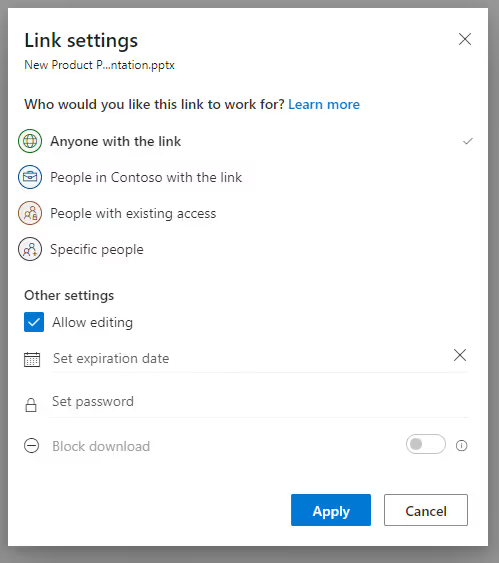
3. Check Allow editing to enable the recipient to make edits. If you selected Anyone with the link, you’ll also have the option of setting an expiration date for the link. The Block download option prevents people from downloading a file or folder they have access to. Selecting Open in review mode only lets someone add comments to a Word document but prevents them from making edits, unless they already have editing permissions.
4. Once you’ve clicked Apply, you can choose to copy the link to your clipboard or send it via email.
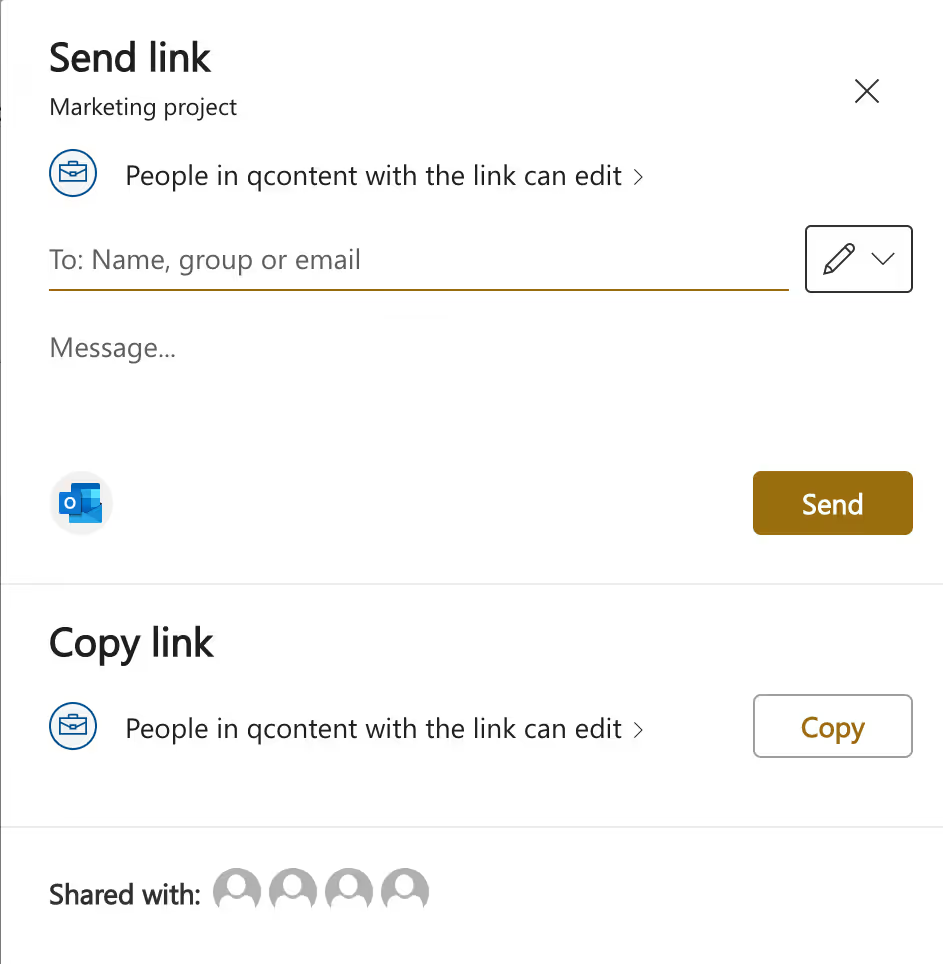
5. The external user will receive an invitation to join the document or folder. Once they accept it, they can log in using a trusted email address or verification code—after which they’ll be added to your organization’s Azure AD.
If you selected Anyone with the link, they’ll be able to view the shared content right away.
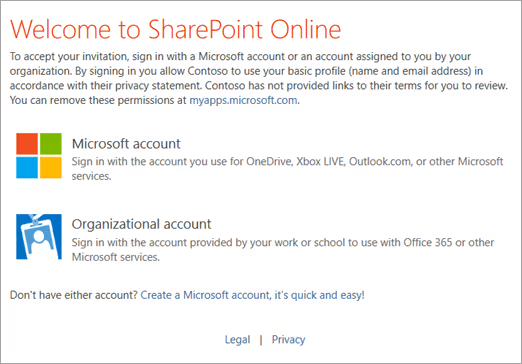
2. Sharing a SharePoint site
Global admins and site owners can share a SharePoint site with people outside your organization—as long as the right permissions are set.
The steps for sharing depend on whether the site is a:
- Communication site
- Microsoft 365 Group-connected team site
Communication site
- Navigate to the communication site you want to share and select Share in the top right corner.
- Enter the names of the users, groups, or security groups you want to share the site with.
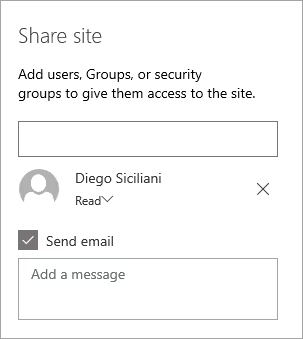
3. Change the permission level (Read, Edit, or Full control) as needed, then click Share.
Microsoft 365 Group-connected team site
This is essentially the same thing as adding an authenticated external user. They’ll receive an invite via email prompting them to sign in—after which they’ll be added as a new guest user to your Azure Active Directory.
The main difference here is that once the invitation is accepted, they’ll receive group emails, calendar invites, and Yammer discussions (if it’s being used). They’ll also gain access to the group’s associated SharePoint team site and content.
By default, anyone in your organization can add guest users to a Microsoft 365 group. But permissions and access differ between group owners, group members, and group guests.
How to manage external sharing at the organizational level
If you’re going to let external users have access to your environment, it’s important to stay aware and in control.
Global and SharePoint admins in Microsoft 365 can control access at the organization level, affecting all SharePoint sites and each user’s OneDrive.
Note: To enable advanced external sharing settings, navigate to your SharePoint or OneDrive admin center. In the left pane under Policies, select Sharing.
Learn SharePoint Online: Best practices, tips, and tricks
Specify the sharing level at the organization level in your SharePoint admin center. By default, the level is set at “Anyone”.
These settings apply to all site types, including Microsoft 365 Group-connected team sites. You’ll see the same four options that you’re given for configuring external sharing at the site level.
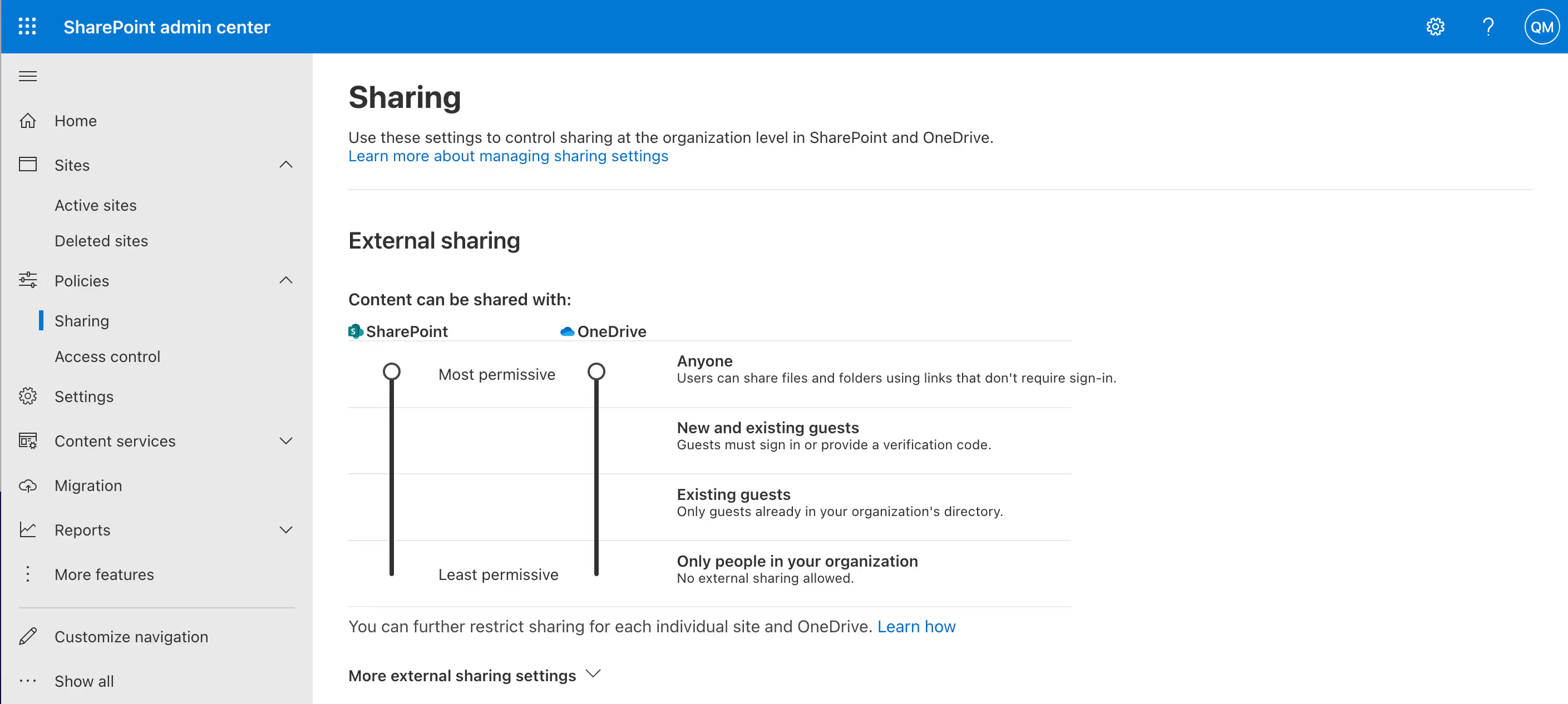
More external sharing settings
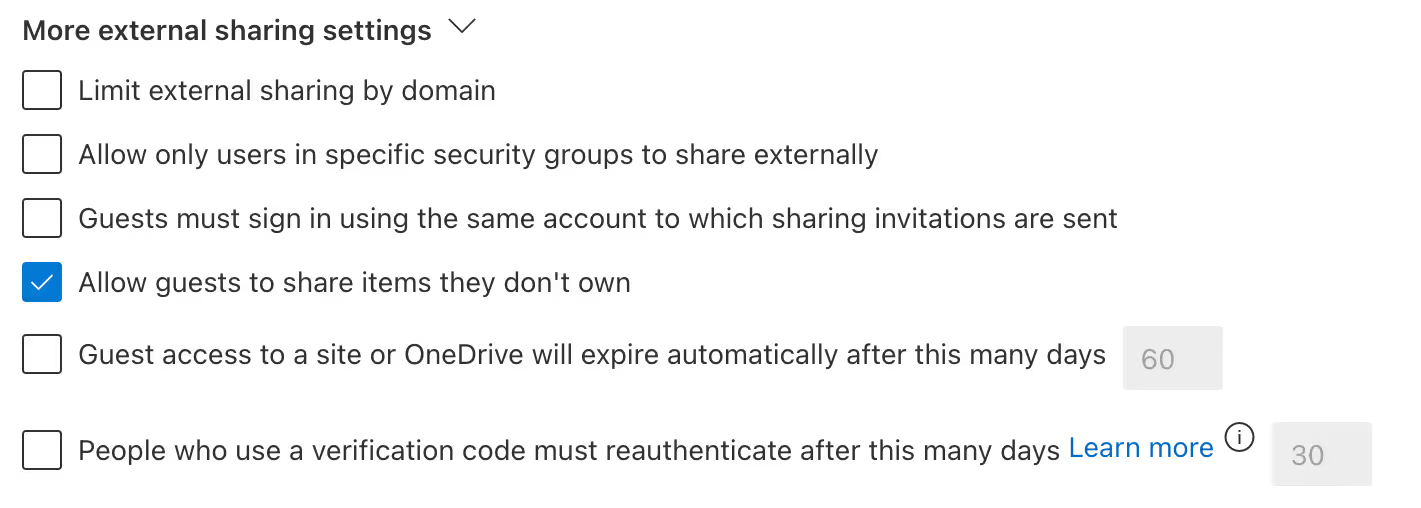
- Limit external sharing by domain: Don’t want any invitations sent to Gmail accounts? Turn on this setting if you want to limit sharing with people at certain organizations or domains. Learn more about limiting external sharing by domain in the official Microsoft documentation.
- Allow only users in specific security groups to share externally: If you only want certain users in your organization to be able to share externally, this option might be right for you. Ensure the users you want to give sharing abilities to are in a security group, then select this option and specify the security group that will have these rights.
- Guests must sign in using the same account to which sharing invitations are sent: Guests can, by default, receive an invitation email at one account and sign in with another. Enable this setting to limit external users to one account.
- Allow guests to share items they don’t own: By default, guests can only share items externally that they have full control permissions for. Check this box to ensure external users can’t share documents they didn’t create.
- Guest access to a site or OneDrive will expire automatically after this many days: If you’ve set an expiration time for guest access, each guest you invite to the site or with whom you share individual files and folders will be given access for a certain number of days.
- People who use a verification code must reauthenticate after this many days: If people who use a verification code have selected to “stay signed in” in the browser, they must prove they can still access the account they used to redeem the sharing invitation.
File and folder links
This setting specifies the default option that shows when a user gets a link. This sets the default for your organization, but it’s worth noting that individual site owners can change the default settings for their site.

- Specific people: With this option, users can enter external email addresses. Recipients will need to verify their identity to access the file.
- Only people in your organization: Links can be forwarded between, and accessed by, any user within your organization.
- Anyone with the link: You can only select this option if your organization-level external sharing is set to “Anyone”. Users can forward links to anyone—internally and externally—and there’s no way to track who’s had access.
Advanced settings for “Anyone” links
If you do allow links to be shared externally with anyone, it’s a good idea to put some limitations in place.
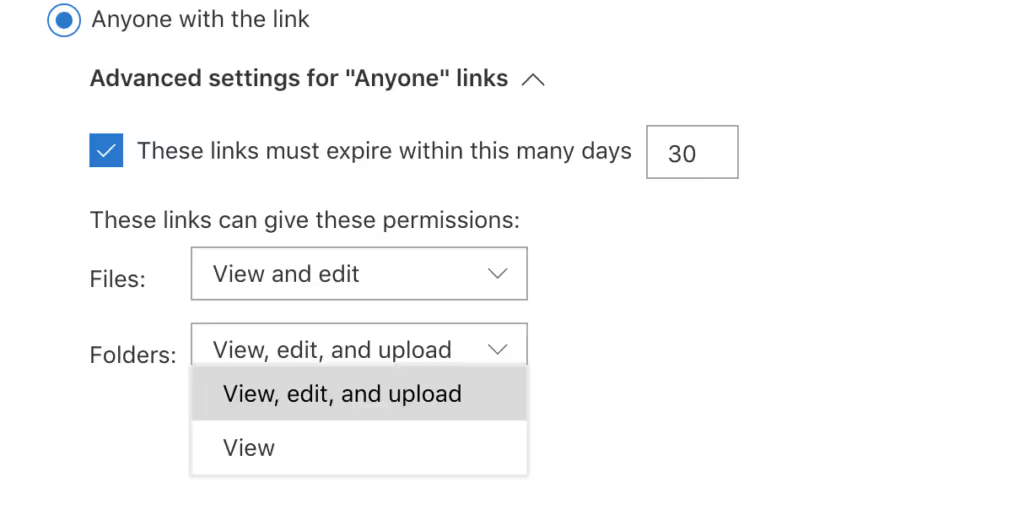
- Link expiration: Set links to expire after a certain number of days.
- Link permissions: Restrict permissions so recipients can only view files or folders.
Other settings
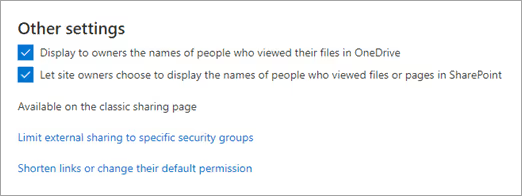
- Display to owners the names of people who viewed their files in OneDrive: Control whether the owner of shared files and folders can see who has viewed them—even if they don’t have the proper permission to make edits. In OneDrive, a card with file access statistics will appear when a user hovers over a file name or thumbnail. Statistics include: number of views on file, number of people who viewed it, and a list of everyone who’s viewed it.
- Let site owners choose to display the names of people who viewed files or pages in SharePoint: This setting lets you specify whether site owners can allow users who have access to a file, page, or news post to see on the file card who has viewed the item. This setting is turned on by default.
External sharing recommendations
- Don’t turn off external sharing! Rather, configure external sharing to your specific business needs, while keeping in mind that your users will need to collaborate with external guests.
- Implement proper governance policies to ensure everyone is on the same page when it comes to reacting to and correcting an external sharing blunder.
- Set up a guest review policy to stay on top of the validity of each guest’s presence within teams and groups, ensuring no information or data remains accessible to people who should no longer have access to it.
- Educate your users on proper external sharing (i.e. how to share a document vs. sharing a site) to avoid inadvertently giving access to sensitive data.
- Turn off anonymous sharing. In most cases, it’s probably best to only allow authenticated external guests or to set an expiration date at the very least. You’ll be able to control and follow up with who has access to what.
- Double-check the permission levels of your site collections to ensure external users don’t inherit permissions that allow them to wreak havoc in your environment.
- Manage security by checking reports every day.
- Use ShareGate’s automated governance tool to manage security easily
External sharing can be a very important part of proper collaboration in your organization, so don’t be afraid of it! Once you understand how it works, you’ll never want to work any other way.
🔒 Securing M365 is a balancing act, not a lockdown: Enroll in our free Microsoft 365 security course to learn how to secure your environment without sacrificing productivity.
SharePoint and Teams external sharing FAQ
How do I set granular permissions and access controls for external users in SharePoint?
So, in SharePoint’s admin center, you can assign various permission levels to external users, such as read-only, edit, or full control permissions. When sharing a file or folder, you can choose the permission level for the external user by selecting the appropriate option in the sharing settings. Make sure to keep on top of monitoring external collaboration!
What security best practices should I follow when sharing content externally in SharePoint?
You’ve got lots of options to share content securely! Consider implementing multi-factor authentication (MFA) for external users, creating data loss prevention (DLP) policies, and regularly monitoring and auditing external user activities. Read more: 3 tips to strengthen remote work security.
Can I share SharePoint content with external users through Microsoft Teams?
Yes! Definitely. SharePoint integrates with Microsoft Teams, allowing you to share content with external users within the Teams environment. You can add external users to a team and grant them access to the associated SharePoint site and files. Easy.
How can I set expiration dates for sharing links or revoke access to shared content for external users?
When you create a sharing link, set an expiration date to automatically revoke access after a specified period. Or, to manually revoke access, navigate to the SharePoint site, locate the shared file or folder, and modify the sharing settings to remove the external user’s access. We wrote a whole guide on how to share content in teams. Check it out.
Does external sharing affect my SharePoint storage and licensing requirements?
Maybe. External sharing may impact your storage usage and licensing requirements. Always monitor your storage consumption and ensure you have sufficient licenses to cover all external users accessing your SharePoint resources.
How do I troubleshoot common external sharing issues in SharePoint?
If you encounter issues with external sharing, start by checking the sharing settings and permissions for the content in question. Ensure the external user has a valid email address and the appropriate permissions. If the issue persists, consult SharePoint documentation or contact Microsoft support for further assistance.
How do I share a SharePoint site with external users in Microsoft 365?
Easy, to share a SharePoint site with external users in Microsoft 365, follow these steps:
- Navigate to the SharePoint site you want to share.
- Click on the “Share” button located in the top-right corner of the site.
- In the sharing dialog box, enter the email addresses of the external users you want to share the site with. You can also add a message if desired.
- Choose the appropriate permission level for the external users from the drop-down menu. The available options include “View,” “Edit,” and “Full Control.”
- If needed, specify additional settings such as whether the external users should be allowed to share the site with others.
- Click on the “Share” button to send the invitation to the external users.
Note: The external users will receive an email invitation with a link to access the SharePoint site. They will be prompted to sign in using a Microsoft account or a work/school account associated with their email address.
.jpg)


.svg)
.avif)
%20(1).avif)


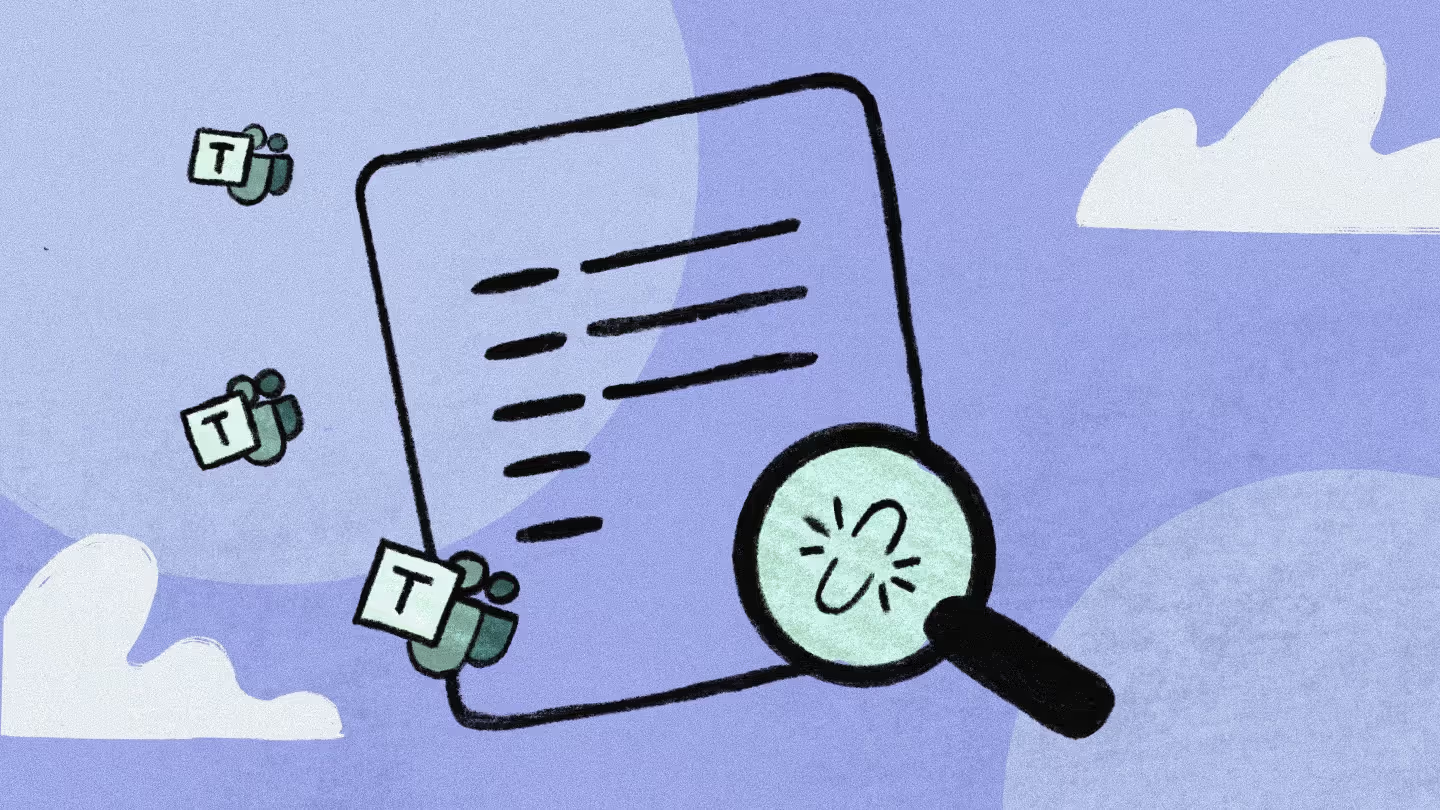






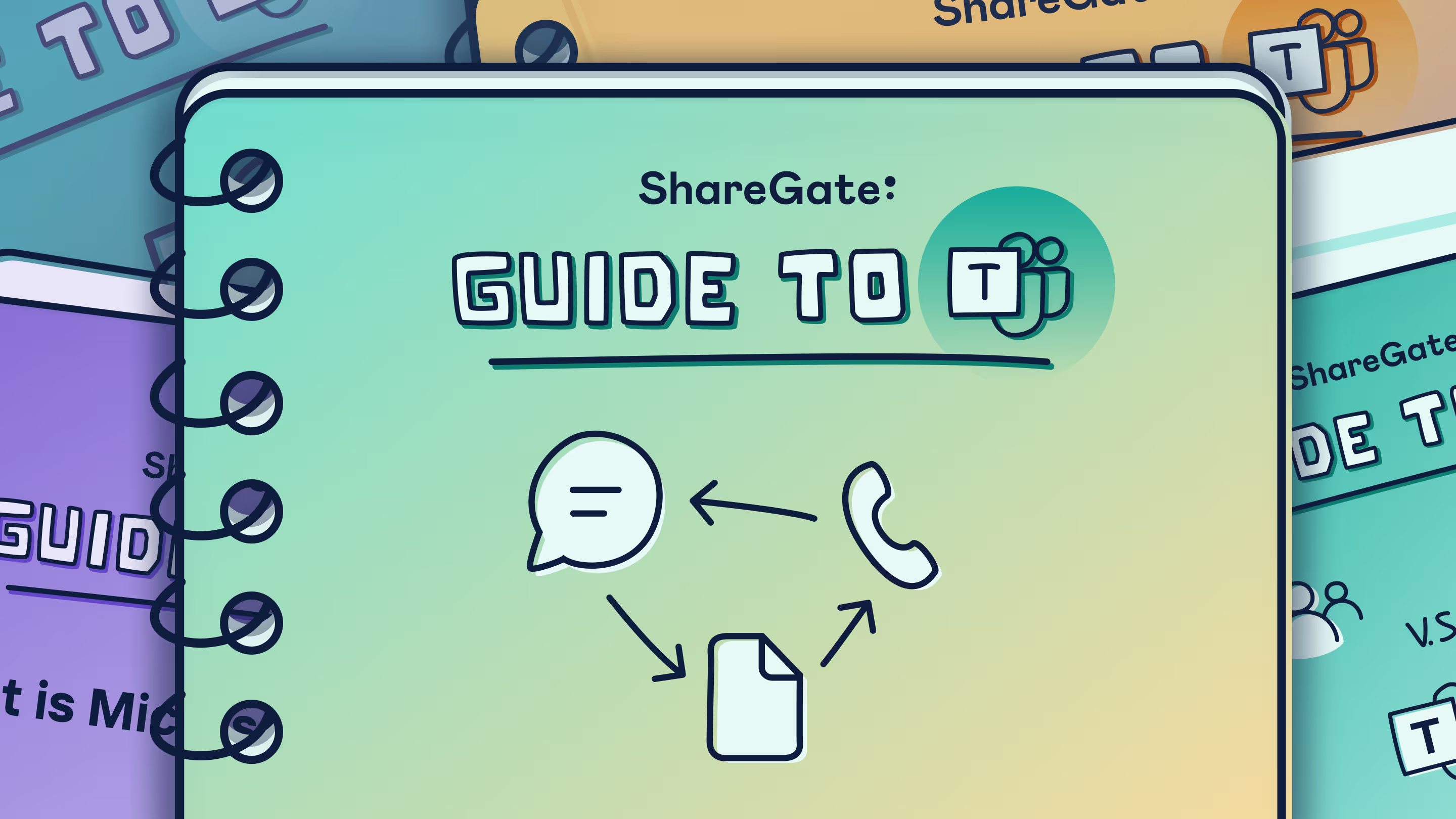


.jpg)


.png)

